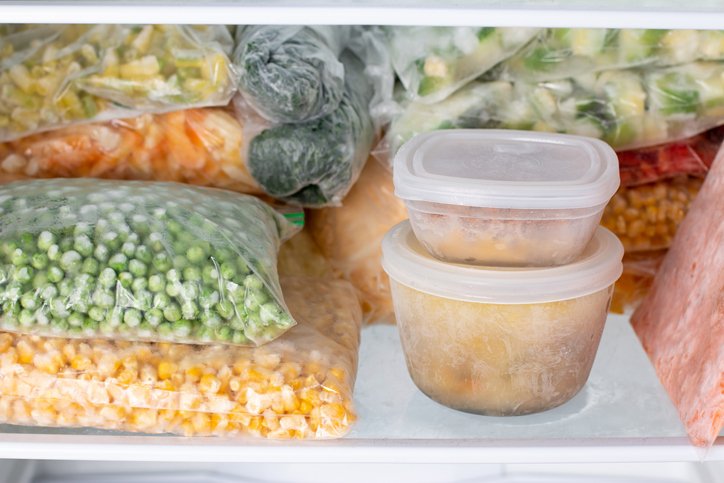Earth Day: Little Known Facts + Easy Tips for More Sustainable Habits at Home
Established in 1970, Earth Day is an opportunity to focus on the condition of our environment and how we can preserve and improve its habitability, present and future. To help celebrate this year, here are a few little-known Earth Day facts—plus some easy and high-impact tips to live more sustainably...
• Earth Day was originally an offshoot of the Vietnam War protests. In 1969, Wisconsin Senator Gaylord Nelson established Earth Day to draw attention to how the war was both consuming lives needlessly and ravaging the environment; the conservationist movement quickly took off from there. By 1990, Earth Day was an event observed by more than 140 countries around the globe.
• The Environmental Protection Agency (EPA) was created in response to the Earth Day movement. In 1970 President Richard Nixon approved the formation of the EPA.
• April 22 was chosen as Earth Day because of college Spring Break. Initially, the start of spring in March was to be the official “Earth Day,” until organizers realized more college students would participate if they were out of class. Since the inception of Earth Day, college students have been the demographic most active in promoting and expanding the movement, and their efforts have led to growing awareness of the risks to our environment, environmental legislation, and innovation in sustainability. But to protect the liveability of the planet, everyone must do their part!
Here at Pinwheel, we do our best to celebrate Earth Day every day by featuring products from small local farmers and producers; selling sustainably sourced meat, poultry and seafood; encouraging reduction of single-use plastics with our bulk products and “bring your own containers” option; and promoting farm-frozen products, which have a lower carbon footprint and minimize food waste due to spoilage. However we are continually looking for ways to further reduce plastic consumption; we are, for example, currently exploring compostable packaging for our Ready Dishes. We always welcome your suggestions on ways to better serve our customers and environment!
Upping Your Green Impact
Going green starts at home, and while separating paper from plastic in your recycling bin is a great first start, there are more steps you can take to be less wasteful and reduce your carbon footprint. In fact, by making small lifestyle changes, you may save time and money in the short run, while also developing healthier, more sustainable habits in the long run. While going green might seem complicated, small, manageable actions can make a significant impact to ensure a healthy planet for future generations. Here are some easy ones to start with…
2. Say “No” To Plastic.
Reduce your plastic consumption by bringing reusable bags to the grocery store or shopping in bulk section as much as possible (and don’t forget to bring reusable containers or bags for this) and you’ll notice how much single-use plastic you can easily avoid. Traditionally, cleaning has involved a lot of single-use products, such as paper towels and plastic bottles. By switching to refillable shampoo, conditioners, hand wash, laundry and dishwashing liquids, you will reduce plastic waste and save money. And we can recommend a fantastic, local resource through whom you can source these products: Main Line Shift!
Meatless Mondays.
By eating vegetarian and/or dairy free for just one day each week, you’ll go a long way towards reclaiming your health and reducing greenhouse gases. Amazingly enough, livestock production emits more greenhouse gases than the entire transportation sector. Skipping a single quarter-pound hamburger can save more than 125 gallons of water and the energy it takes to power a smartphone for six months. Do it every week for a year, and the greenhouse-gas savings are equivalent to biking 1,000 miles instead of driving.
3. Frozen Prevents Food Waste
The average American family discards about $1500 of food every year. The cost to produce that food totals a whopping $162 billion yearly, according to the U.S. Department of Agriculture. It’s cost that’s borne by both individuals and society as a whole. Food waste sends more than a third of our food supply to rot and is a major contributor to climate change. Project Drawdown ranks reducing food waste as the third most impactful action, behind only better management of refrigerants and increased onshore wind power (for context, electric vehicles rank 26th). And while we can’t all install wind turbines on our lunch breaks, we all can make easy tweaks to facilitate less waste.
When in the produce section of your supermarket it can be easy to envision a week of healthy, Instagram-able meals of colorful salads and herb-sprinkled veggie roasts. But life often gets in the way, and that produce doesn’t last long. This is why environmentalists and nutritionists both advocate strongly for frozen produce: First, frozen food has a much longer shelf life than fresh food — so it can reduce food waste due to spoilage significantly. Second, frozen food production processes minimizes waste. Buying frozen allows you, grocery stores, and the entire food supply chain to waste less food, without sacrificing nutrition.
Bulk frozen veggies minimize packaging and maintain their flavor, texture and nutrients.
Ready whenever you need it, frozen produce doesn’t spoil!
Scene from a Farmer’s Market? Nope- this is what your local landfill looks like…
4. Kill the Vampire
According to the government's Energy Star program, “vampire power”, the energy some electronics use when they are switched off but still plugged in, accounts for more than $11 billion per year in unnecessary electric usage. The United States consumes 26 percent of the world's energy, of which approximately 5 percent is vampire power. To put that in perspective, that's between 200 and 400 terawatt hours -- roughly as much electricity as the entire country of Italy consumes in a year.
To prevent this wasteful use of energy, identify which electronic devices drain power when not in use. Typical culprits are: cable/satellite boxes; digital TV converters; mobile/cellular chargers; video game consoles; standby coffee makers;and devices that turn on instantly via remote control. Replace these electronic items with energy-efficient devices or cut off power when you aren't using them. If you're not using an electronic device, unplug it -- that's the blanket approach to fighting vampire power. You can make this step even easier with a surge protector, power strip, or Smart outlet.







